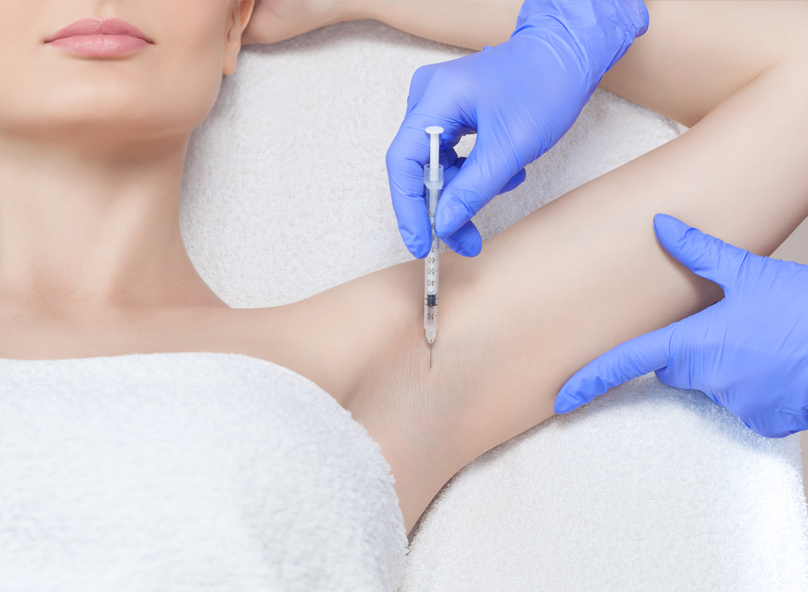What Is Botox for Sweat Glands and How Does It Work?
Sweating is a natural bodily function that helps regulate internal temperature. However, for some individuals, the amount of sweat produced exceeds what is considered normal or necessary. This condition, known as hyperhidrosis, can significantly impact daily life, causing discomfort, emotional distress, and social anxiety. Fortunately, there are advanced, non-surgical solutions available today to manage this issue effectively. One of the most sought-after treatments for controlling excessive sweating is Botox for Sweat Glands in Dubai. This minimally invasive procedure uses botulinum toxin to temporarily block the nerves responsible for activating sweat glands, providing relief for several months at a time.
Understanding Hyperhidrosis
Hyperhidrosis primarily affects specific areas of the body, such as the underarms, palms, soles of the feet, and forehead. While some people experience general sweating, others deal with focal hyperhidrosis, which targets a specific area. This condition isn't linked to physical activity or heat and can be both embarrassing and inconvenient. The sweat glands in affected individuals are overactive due to overstimulation of the sympathetic nerves. Traditional remedies, like antiperspirants or lifestyle modifications, often fall short in delivering lasting results, especially for those with moderate to severe cases.
How Botox Works on Sweat Glands
Botox (botulinum toxin type A) is commonly known for its cosmetic uses in reducing facial wrinkles. However, its medical applications are vast, including the management of hyperhidrosis. When injected into targeted areas, Botox blocks the release of acetylcholine—a neurotransmitter that stimulates sweat glands. As a result, the treated glands no longer receive signals to produce sweat. The effects are localized, meaning only the treated areas are affected. Surrounding muscles and skin functions remain entirely normal. Typically, patients begin to notice a significant reduction in sweat within a few days of treatment, with results lasting between 4 to 12 months, depending on the individual's response.
Key Areas Treated with Botox
Botox is FDA-approved for treating primary axillary hyperhidrosis (underarm sweating), but it's also widely used off-label for other areas:
-
Palms of the hands: Helps reduce clammy hands which can impact work and social life.
-
Soles of the feet: Alleviates sweating that can cause odor and discomfort.
-
Face and scalp: Manages excessive facial sweating, often seen in stressful situations.
-
Back or chest: Less common but still viable for some patients.
Each area requires specific dosing and expertise to ensure effective results while avoiding side effects like temporary weakness in hand muscles or discomfort during walking.
The Treatment Procedure Explained
Botox injections for sweat glands are performed in a controlled medical setting. The treatment area is first cleaned and sometimes marked using a starch-iodine test to highlight active sweat glands. A fine needle is then used to inject small amounts of Botox just under the skin in a grid-like pattern. The procedure usually takes 30 to 45 minutes, depending on the size and number of areas being treated. Minimal discomfort is involved, though topical numbing creams or ice packs can be applied to ease sensitivity. Once completed, patients can return to most normal activities immediately, although they are typically advised to avoid intense physical activity or heat exposure for 24 hours.
Benefits of Botox for Sweat Glands
The appeal of Botox for managing excessive sweating lies in its many advantages:
-
Non-invasive approach: No surgery or significant recovery time is required.
-
Quick and convenient: The session is brief and easily integrated into a busy schedule.
-
Minimal side effects: Risks are low when performed by a skilled professional.
-
Improved quality of life: Reduces social embarrassment, boosts self-esteem, and increases comfort.
In addition, it helps individuals regain control over daily activities like shaking hands, wearing lighter clothing, and participating confidently in social and professional settings.
Ideal Candidates for the Procedure
The treatment is most suitable for those who:
-
Experience daily excessive sweating that disrupts daily life.
-
Have not responded well to topical treatments or lifestyle changes.
-
Are looking for a non-permanent, reversible solution.
-
Do not have any allergies to Botox or related ingredients.
It is not recommended for pregnant or breastfeeding individuals or those with certain neurological disorders.
Psychological Impact and Confidence Boost
Excessive sweating can take a significant emotional toll, often leading to anxiety, isolation, and even depression. Botox treatment helps restore confidence by eliminating one of the primary stressors for affected individuals. Knowing that they can interact socially, professionally, and physically without fear of visible sweating empowers many to lead more fulfilling lives.
Conclusion
Botox for sweat glands offers an advanced, clinically proven method to manage hyperhidrosis with minimal intervention and maximum benefit. It not only helps control excessive sweating but also improves emotional well-being and restores normalcy in day-to-day activities. This innovative treatment stands out as a reliable option for those struggling with the physical and psychological effects of unwanted sweating.




Comments
Post a Comment